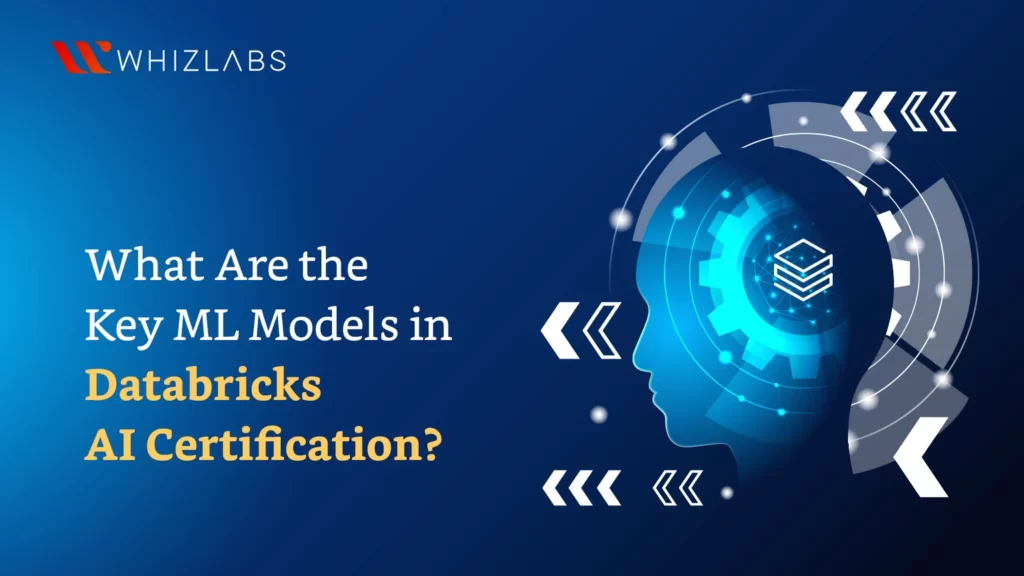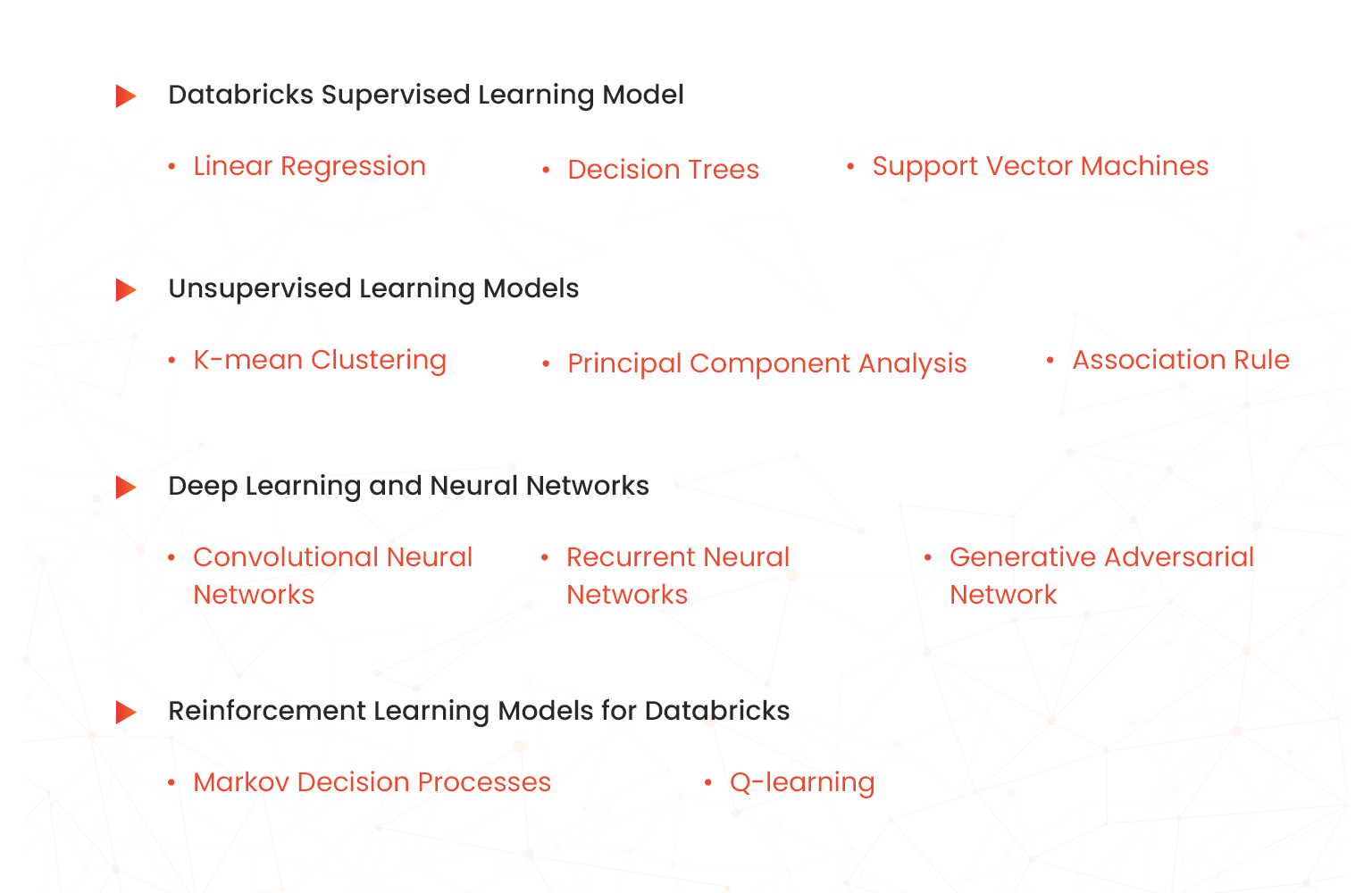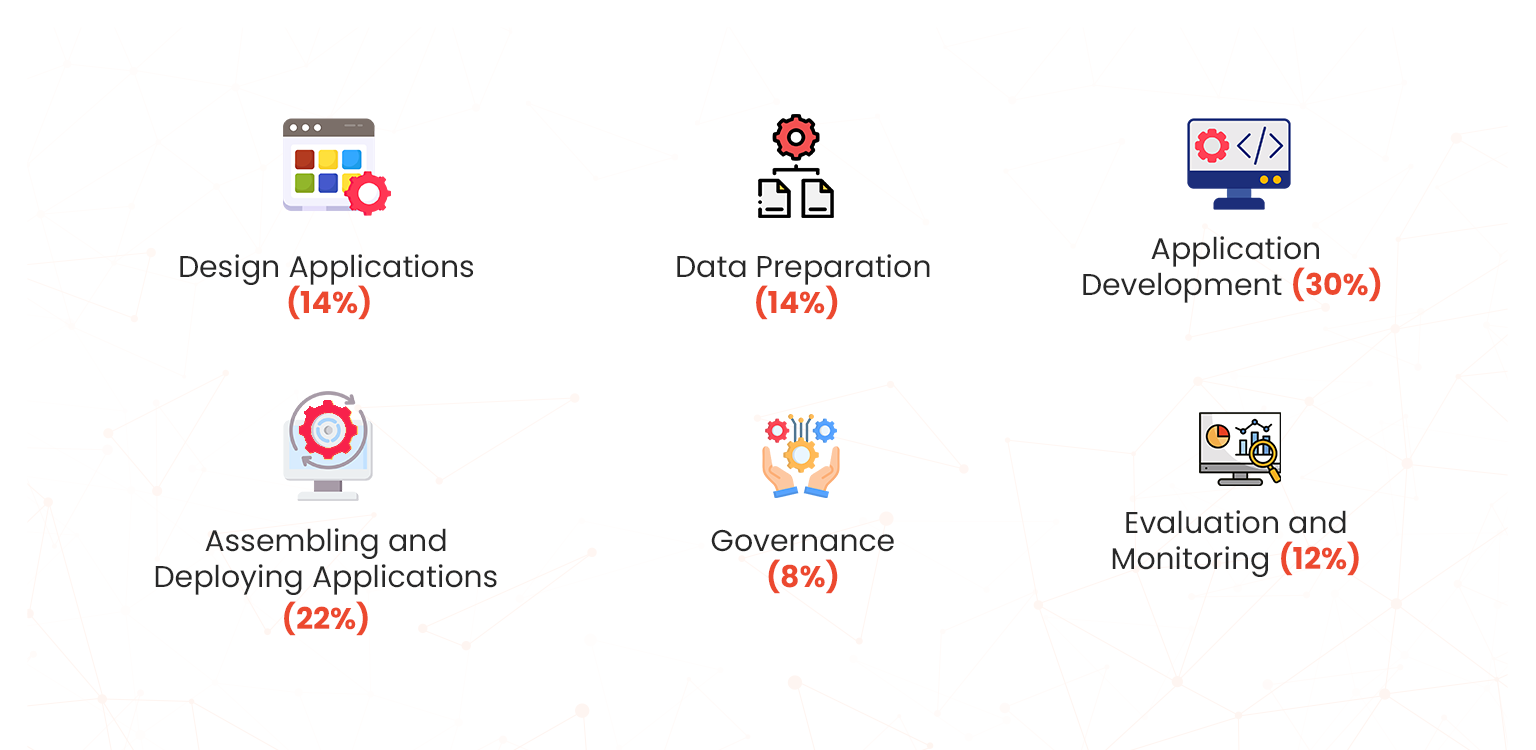In this blog, we will be discussing the Key ML Models in Databricks AI Certification which validates generative AI deployment solutions. This contributes to growth and improves performance significantly contributing to achieving performance outcomes.
Introduction to Databricks Certified Generative AI Engineer Associate
The Databricks certified Generative AI Engineer Associate Certification validates the candidate’s expertise in building and deploying generative AI solutions. Databricks is capable of handling large language models and can work in a collaborative environment to process, analyse, and manage large-scale data efficiently. As generative AI is revolutionizing industries, mastering this certification candidates excel in their skill to design, implement and optimize AI workflow. Leveraging MLflow, Unity Catalog, and Vector search, one can integrate key ML (machine learning) models into generative AI applications.
Understanding the Key Role of Machine Learning (ML) Models in Databricks Certification
Today Machine Learning is the heart of tech improvements and of course in Generative AI engineering. It solves critical complex problems with data, enables generative AI solutions and optimizes workflow. Its emphasis on practical knowledge-gaining nuances enables ML model deployment within the Databricks ecosystem. Generative AI models power supervised, and unsupervised learning, along with deep learning, and reinforcement learning for Retrieval-augmented generation applications and LLM chains.
1. Databricks Supervised Learning Model
This is essential for tasks where labelled data are available, and it’s used to predict outcomes based on the inputs. Key models of Supervised learning are
-
Linear Regression
It’s used to predict continuous variables. It finds the relationship between dependent and independent variables. It is often used in time-series forecasting and regression tasks with the generative AI workflow. Its scalable infrastructure makes large dataset processing more ideal with this model.
-
Decision Trees
It’s applied for classification and regression tasks which split data into subsets based on the feature of the value. It is used to break down complex decision processing like feature selection for generative AI pipelines.
-
Support Vector Machines
It’s effective for problem classification, it finds the hyperplane which separates different classes. Its ability to handle non-linear relationships with kernel tricks is a key model in ML for Databricks AI Engineer Associate exam.
2. Unsupervised Learning Models
It uncovers patterns and is crucial to explore hidden patterns in unstructured datasets and for exploratory analysis.
-
K-mean Clustering
It groups data points into clusters based on the similarity of the data, and it is widely used for customer segmentation and data processing in generative AI models in Databricks. Its scalability makes it a go-to for large-scale unsupervised tasks.
-
Principal Component Analysis
It can reduce dimensionalities while retaining essential information, it preserves variance, a technique often applied to optimize data in generative AI workflow. It helps with feature engineering and model efficiency.
-
Association Rule
It identifies the relationship between variables in a large dataset and is often used in market basket analysis.
3. Deep Learning and Neural Networks
They are pivotal while handling complex data structures like images, texts and sequences.
-
Convolutional Neural Networks
It’s widely used for image recognition and processing tasks. It extracts features through convolutional layers. Its use tasks like image generation or preprocessing visual inputs for Generative AI applications.
-
Recurrent Neural Networks
It is designed for sequence data like time series, and natural language processing tasks in generative AI applications in Databricks. They are widely used to understand context of Large Language Models and are a core component in Gen AI Certification.
-
Generative Adversarial Network
They are used to generate new data samples pitting a generator against discrimination to create realistic data. It’s a key to building innovative solutions like synthetic data generation.
4. Reinforcement Learning Models for Databricks
The reinforcement learning model involves agents learning with trial and error techniques, a model for decision-making in dynamic environments.
-
Markov Decision Processes
Providing a framework for modelling decision-making where outcomes partly are random and partly under control which is foundational to RL. It optimizes workflows and fine-tunes generative AI systems.
-
Q-learning
The Q-learning model is a free reinforcement learning algorithm to help an agent to learn actions quickly to maximize cumulus rewards.
Preparation Guide for the Databricks Certified Generative AI Engineer Associate Exam
Sharing some tips to help you effectively prepare for your Databricks Certified Generative AI Engineer Associate Exam.
1. To start with, understand the exam structure and topics, which would familiarise you with your exam formats.
2. Do a lot of practice to gain hands-on experience which would help you understand
- The MLflow usage from model lifecycle management
- Implements vector search for semantic retrieval
- With model serving deploying models
- Understand how to manage data governance using the unity catalog.
The hands-on experience and practice will reinforce the theoretical knowledge.
3.Master Prompt Engineering is vital to optimize AI model performance. Which focus on
- Zero-shot and few-shot prompting techniques
- Strategies refining prompts that improve responses.
- Understand prompt chaining techniques to improve AI model interactions.
4. Retrieval-augmented generation is important to gain the certification which is the key to understand
- Parsing and chunking documents to retrieve them efficiently.
- Using vector search to document embeds.
- Implement RAG in both structured and unstructured data.
5. Studying Lang-Chain Frameworks simplifies LLM application development as it concentrates on
- Core components like retrievers, memory chains and agents
- Build AI workflow using langchain that is integrated with Databricks.
6. Explore Application development with Gen AI will acquaint the learners with concepts like
- Workflows like Agentic AI, Multi-sage reasoning, etc.
- Connects with AI models to extend data sources
- Designing efficient applications that are AI-driven.
7. Model Deployment and performance optimization learning help with bother batch and real-time inference such as
- Authentication and access control for production environments
- Performance tuning to improve scalability in AI Applications.
8. The governance and Security Guide provides the learner familiarize with the best practices in developing Gen AI applications. It focus on
- Implementation of guardrails that are responsible for AI usage
- Manage model access, version control compliance and others with Dataset.
9. Learning Model Evaluation and Monitoring is very crucial Generative AI in Databricks to analyse
- Evaluation model metrics in terms of accuracy and relevancy
- Tracks performance through MLflow and Lakehouse monitoring tools.
10. Utilize official Databricks resources and training available and other reputed resources and go through the documentation on MLflow, Vector Search, and Model Serving.
Vitalise on the Following for Databricks AI Engineer Associate Exam Resources
-
Official Databricks Resources
Visualize the study guide, documents, tutorials and other resources provided on itself. You can utilize tools like MLflow and Unity Catalog to gain hands-on experience.
-
Online Courses and Practice Tests
There are a number of courses out there, while we provide you with exclusive practice tests, detailed elaborated explanations and updated format questions, giving learners a perfect tool kit to prepare more effectively. -
Communities, Forums and Webinars
Vitalise the communities and forums, participating in webinars will give you an open space to learn, connect with like-minded individuals and excel in your learning journey more effectively. Active engagement in a forum also brings clarity to doubts and emphasises sharing knowledge.
Pro Tips For Your Databricks AI Certification Preparation
- Majorly focus on Python Based ML Coding – it is the primary language to be used in the ML models for certification exam.
- Make sure to practice with specific tools like Vector Search and model Serving and build a regime out of it.
- Practice more on simulated exam conditions to gain confidence and have hands-on experience.
Conclusion: Importance of ML Models in Databricks AI Certification
Machine Learning models are the centre of Databricks AI Certification as it stands as a testament to testing the ability to leverage key ML models. It contributes to building effective cutting-edge generative AI solutions. It contributes to curating advanced solutions for supervised, unsupervised, deep learning, and reinforcement learning techniques. With our practice test, you can master not just key ML models but also gain expertise in deep learning, gen AI applications deployment and more. What more? Get certified in the Databricks AI Engineer Associate exam grab your top recourse batch and excel in your journey.
- What Is the Role of AWS Lake Formation in Data Lakes? - April 17, 2025
- What will you learn from AZ-900 certification? - April 11, 2025
- What Are the Key ML Models in Databricks AI Certification? - March 25, 2025
- What Are AZ-800 Security Strategies for Hybrid Cloud? - February 28, 2025
- How AZ-140 Boosts Your Cloud & VDI Expertise? - February 19, 2025


